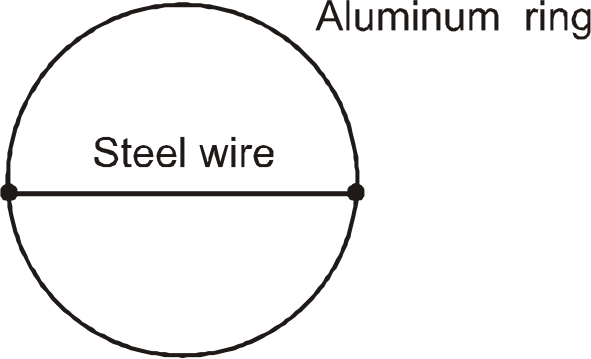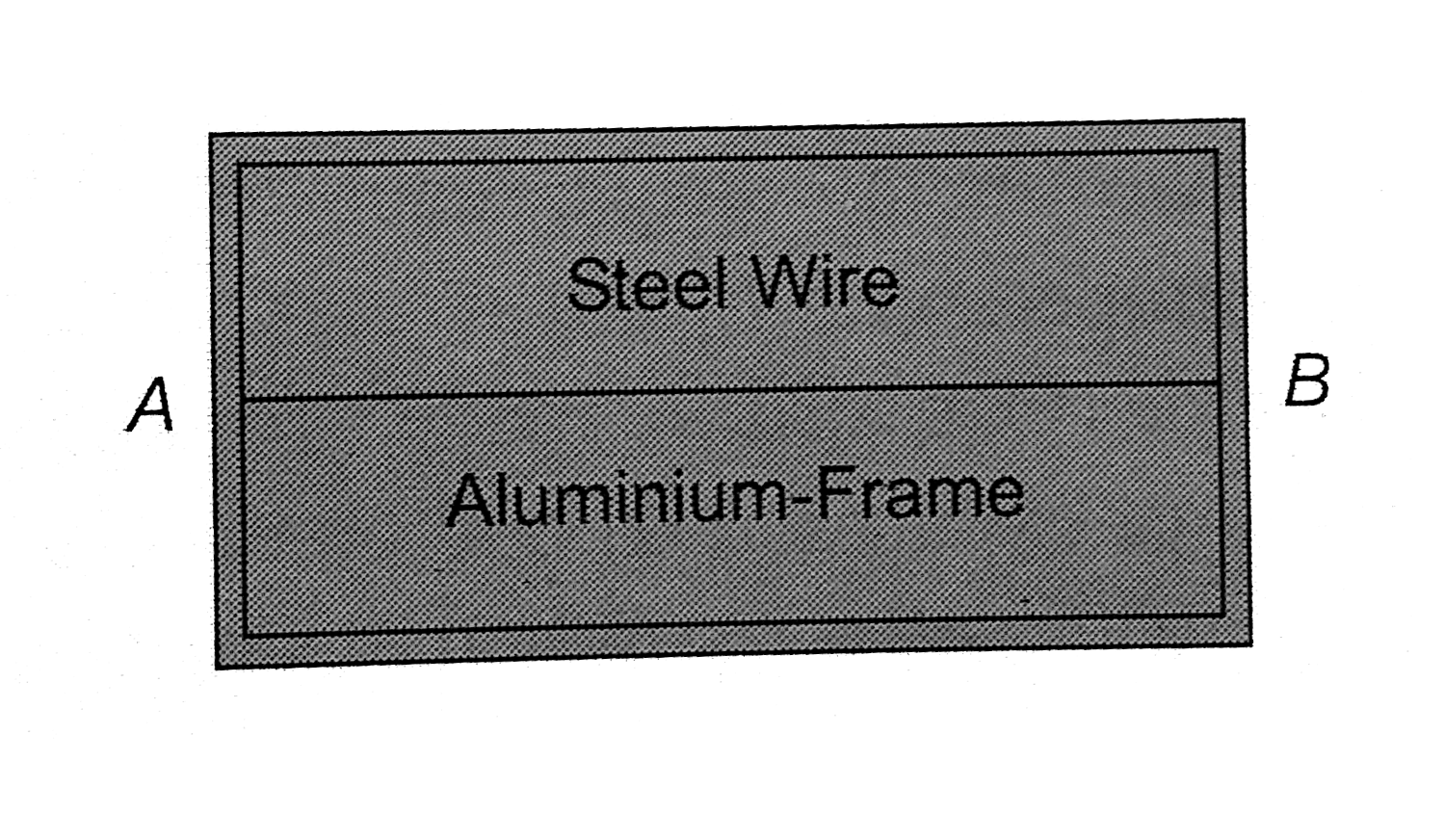
A steel wire is rigidly fixed along diameter of aluminium ring of radius R as shown. Linear expansion coefficient of steel is half of linear expansion coefficient for aluminium thent he thermal stress developed in steel wire is:
more than RαAl△θY
less than RαAl△θY
Equal to RαAl△θY
equal to 2RαAl△θY
Stress =2R[αal−αst]△θY if aluminimum ring is alowed to expand freely
So stress <2R(αal)△θY
Similar Questions
A steel wire AB of length 85cm at 10∘C is fixed rigidly at points A and B in an aluminium frame as shown. If the temperature of the system is raised to 110∘C , what extra stress will be produced in the wire relative to aluminium frame. Assume that coefficient of linear expansion for aluminium and steel are 23×10−6/∘C and 11×10−6/∘C respectively and Young's moduls for steel is 2×1011 pa.

View Solution
In figure which strip (brass or steel) has higher coefficient of linear expansion.
View Solution
Knowledge Check
A steel wire AB of length 100cm is fixed rigidly at points A and B in an aluminium frame as shown in the figure. If the temperature of the system increases through 100∘C, then the excess stress produced in the steel wire relative to the aluminium?
αAl=22×10−6/0C and αsteel=11×10−6/0C
young's Modulus of steel is 2×1011Nm−2.
_E01_116_Q01.png) A2.2×108PaB22×108PaC0.2×108PaD220×108Pa
A2.2×108PaB22×108PaC0.2×108PaD220×108PaThe radius of a ring is R and its coefficient of linear expansion is α. If the temperature of ring increases by θ then its circumfrence will increase by
AπRαθB2πRαθCπRαθ2DπRαθ4When solid is heated , its length changes according to the relation l=l0(1+αΔT) , where l is the final length , l0 is the initial length , ΔT is the change in temperature , and α is the coefficient of linear is called super - facial expansion. the area changes according to the relation A=A0(1+βΔT), where A is the tinal area , A0 is the initial area, and β is the coefficient of areal expansion.
The coefficient of linear expansion of brass and steel are α1andα2 If we take a brass rod of length I1 and a steel rod of length I2 at 0∘C , their difference in length remains the same at any temperature ifAα1l2=α2l2Bα1l22=α2l21Cα21l2=α22l1Dα1l1=α2l2
Two Aluminium rods and a steel rod of equal cross-sectional area and equal length l0 are joined rigidly side by side as shown in figure. Initially the rods are at 0∘C. Find the length of the rod at the temperature θ if young's modulus of elasticity of the aluminium and steel are Ya and Ys respectively and coefficient of linear expansion of aluminum and steel are αa and αs respectively.
∣∣ ∣∣AluminiumSteelAluminium∣∣ ∣∣
View SolutionThe length of each steel rail is 10m in winter. The coefficient of linear expansion of steel in 0.000012/∘C in summer. The gap to be left between the rails
View SolutionA liquid of volumetric thermal expansion coefficient = γ and bulk modulus B is filled in a spherical tank of negligible heat expansion coefficient its radius R and wall thickness is t (t≤≤R) when the temperature of the liquid is raised by theta the tensile stress developed in the walls of th tank is:
View SolutionThe diameter of a metal ring is D and the coefficient of linear expansion is α. If the temperature of the ring is increased by 10C, the circumference and the area of the ring will increases by
View SolutionTwo rods, one of aluminium and the other made of steel, having initial length l1andl2 are connected together to from a single rod of length l1+l2. The coefficients of linear expansion for aluminium and steel are αaandαs and respectively. If the length of each rod increases by the same amount when their temperature are raised by t0C, then find the ratio l1/(l1+l2)
View Solution

